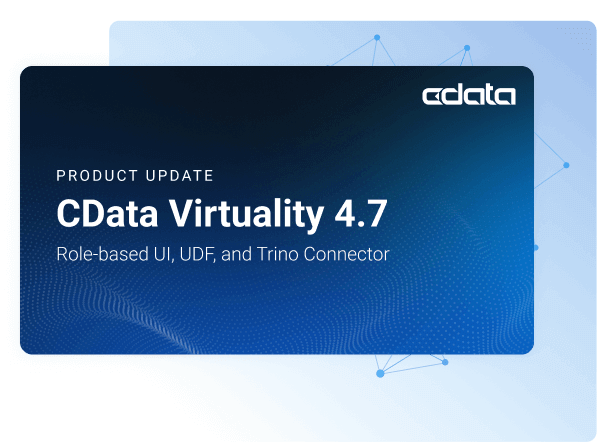Discover how a bimodal integration strategy can address the major data management challenges facing your organization today.
Get the Report →PowerShell Scripting to Replicate Presto Data to MySQL
Write a simple PowerShell script to replicate Presto data to a MySQL database.
The CData Cmdlets for Presto offer live access to Presto data from within PowerShell. Using PowerShell scripts, you can easily automate regular tasks like data replication. This article will walk through using the CData Cmdlets for Presto and the CData Cmdlets for MySQL in PowerShell to replicate Presto data to a MySQL database.
After obtaining the needed connection properties, accessing Presto data in PowerShell and preparing for replication consists of four basic steps.
Set the Server and Port connection properties to connect, in addition to any authentication properties that may be required.
To enable TLS/SSL, set UseSSL to true.
Authenticating with LDAP
In order to authenticate with LDAP, set the following connection properties:
- AuthScheme: Set this to LDAP.
- User: The username being authenticated with in LDAP.
- Password: The password associated with the User you are authenticating against LDAP with.
Authenticating with Kerberos
In order to authenticate with KERBEROS, set the following connection properties:
- AuthScheme: Set this to KERBEROS.
- KerberosKDC: The Kerberos Key Distribution Center (KDC) service used to authenticate the user.
- KerberosRealm: The Kerberos Realm used to authenticate the user with.
- KerberosSPN: The Service Principal Name for the Kerberos Domain Controller.
- KerberosKeytabFile: The Keytab file containing your pairs of Kerberos principals and encrypted keys.
- User: The user who is authenticating to Kerberos.
- Password: The password used to authenticate to Kerberos.
Collecting Presto Data
-
Install the module:
Install-Module PrestoCmdlets -
Connect to Presto:
$presto = Connect-Presto -Server $Server -Port $Port -
Retrieve the data from a specific resource:
$data = Select-Presto -Connection $presto -Table "Customer"You can also use the Invoke-Presto cmdlet to execute pure SQL-92 statements:
$data = Invoke-Presto -Connection $presto -Query 'SELECT * FROM Customer WHERE Id = @Id' -Params @{'@Id'='123456789'} -
Save a list of the column names from the returned data.
$columns = ($data | Get-Member -MemberType NoteProperty | Select-Object -Property Name).Name
Inserting Presto Data into the MySQL Database
With the data and column names collected, you are ready to replicate the data into a MySQL database.
-
Install the module:
Install-Module MySQLCmdlets -
Connect to MySQL, using the server address and port of the MySQL server, valid user credentials, and a specific database with the table in which the data will be replicated:
$mysql = Connect-MySQL -User $User -Password $Password -Database $Database -Server $Server -Port $Port -
Loop through the Presto data, store the values, and use the Add-MySQL cmdlet to insert the data into the MySQL database, one row at a time. In this example, the table will need to have the same name as the Presto resource (Customer) and to exist in the database.
$data | % { $row = $_ $values = @() $columns | % { $col = $_ $values += $row.$($col) } Add-MySQL -Connection $mysql -Table "Customer" -Columns $columns -Values $values }
You have now replicated your Presto data to a MySQL database. This gives you freedom to work with Presto data in the same way that you work with other MySQL tables, whether that is performing analytics, building reports, or other business functions.
Notes
-
Once you have connected to Presto and MySQL in PowerShell, you can pipe command results to perform the replication in a single line:
Select-Presto -Connection $presto -Table "Customer" | % { $row = $_ $values = @() $columns | % { $col = $_ $values += $row.$($col) } Add-MySQL -Connection $mysql -Table "Customer" -Columns $columns -Values $values } -
If you wish to replicate the Presto data to another database using another PowerShell module, you will want to exclude the Columns, Connection, and Table columns from the data returned by the Select-Presto cmdlet since those columns are used to help pipe data from one CData cmdlet to another:
$columns = ($data | Get-Member -MemberType NoteProperty | Select-Object -Property Name).Name | ? {$_ -NotIn @('Columns','Connection','Table')}






